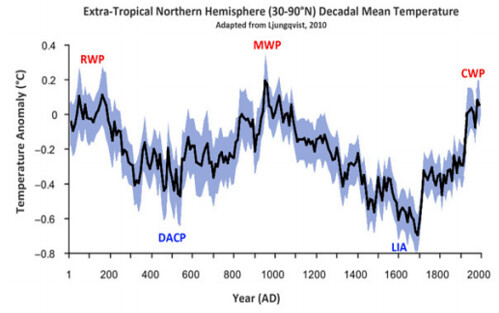He moves in darkness as it seems to me / Not of woods only and the shade of trees.
 The Sleepwalkers: A History of Man's Changing Vision of the Universe is a 1959 book by Arthur Koestler, and one of the main accounts of the history of cosmology and astronomy in the Western World, beginning in ancient Mesopotamia and ending with Isaac Newton. At least, that's what wiki sez, so it must be so. Its a good book; I recommend it. It isn't flawless - one of its entertaining ideas, that no-one really read Copernicus's De revolutionibus orbium coelestium - has been, shall we say, heavily challenged by Owen Gingerich (that book is quite good too, but a bit laboured). But at the worst that bit can be counted as a "fruitful mistake".
The Sleepwalkers: A History of Man's Changing Vision of the Universe is a 1959 book by Arthur Koestler, and one of the main accounts of the history of cosmology and astronomy in the Western World, beginning in ancient Mesopotamia and ending with Isaac Newton. At least, that's what wiki sez, so it must be so. Its a good book; I recommend it. It isn't flawless - one of its entertaining ideas, that no-one really read Copernicus's De revolutionibus orbium coelestium - has been, shall we say, heavily challenged by Owen Gingerich (that book is quite good too, but a bit laboured). But at the worst that bit can be counted as a "fruitful mistake".
Its really an account of the history of the Copernicus / Brahe / Kepler / Newton shift from geocentric to heliocentric astronomy, and from an essentially geometric view to a physics-based one (see-also my Feynman on Brahe for a detail, from which I find I've linked Science controversies past and present, also worth a read).
 The entire process is endlessly fascinating, but the point that I keep coming back to wonder at is the epicycles. This starts with the Greeks, who decided something like: the heavens are perfect, circles are perfect, therefore planets move in circles. I may have simplified just a little, but not much. The Greeks weren't heavily into observations, so my suspicion is that the people who thought this up didn't really believe it, or much care: it explained what they needed, and that would do. People who actually needed to predict the movements of the planets then found it was inaccurate; and for such practical people adding enough epicycles left you with the ability to predict far enough in advance. And somehow the idea that perfect motion was circular was reconciled with the the full knowledge that the motion modelled was composition-of-circles, which isn't circular, and isn't perfect. Weird.
The entire process is endlessly fascinating, but the point that I keep coming back to wonder at is the epicycles. This starts with the Greeks, who decided something like: the heavens are perfect, circles are perfect, therefore planets move in circles. I may have simplified just a little, but not much. The Greeks weren't heavily into observations, so my suspicion is that the people who thought this up didn't really believe it, or much care: it explained what they needed, and that would do. People who actually needed to predict the movements of the planets then found it was inaccurate; and for such practical people adding enough epicycles left you with the ability to predict far enough in advance. And somehow the idea that perfect motion was circular was reconciled with the the full knowledge that the motion modelled was composition-of-circles, which isn't circular, and isn't perfect. Weird.
And somehow this because the accepted model of reality. Since at that point they had no physics the fact that it was physically ridiculous wasn't a cogent objection. But somehow what should have been an objection, wasn't: that you couldn't make one epicycle model fit all the observations. So you had different, incompatible, models for different situations (I struggle to remember the details, do feel free to help me out, but I think it was position / speed / distance. You can tell, I think, that I have little patience with the details: like the antient Greeks, I'm not a detail man).
 And now (like some long-winded C of E vicar) I finally come round to my point. Which is trying to talk about past temperature variation with the self-described "lukewarmers" (I know, I know: what's the point you cry? Well, you have to try. Or at least someone has to). The bizarrely-enobled M Ridley asserts (in a piece once published by the GWPF but now taken down for unclear reasons, but copied by TF; webcite) that:
And now (like some long-winded C of E vicar) I finally come round to my point. Which is trying to talk about past temperature variation with the self-described "lukewarmers" (I know, I know: what's the point you cry? Well, you have to try. Or at least someone has to). The bizarrely-enobled M Ridley asserts (in a piece once published by the GWPF but now taken down for unclear reasons, but copied by TF; webcite) that:
We now know there is nothing unprecedented about the level and rate of change of temperature today compared with Medieval, Roman, Holocene Optimum and other post-glacial periods...
You might wonder "how do we know this"? If you're MR, or part of the septicosphere, the answer is easy: you know it in the same way that antient Greeks knew the planets moved in circles: its obvious; all your friends know it; and anyone you ask knows it; its part of your mythology. What more is needed? MR's answer is Ljungqvist, which we'll come back to in a bit, but the problem with that is that it only goes back 2kyr, so doesn't cover the HO. TF isn't fazed by that, however, because he refers me to the wiki page I've inlined. So I said:
First of all, its a pile of wiggly lines. None of them are in any sense a global or hemispheric series. You’re obviously not choosing to take the max of the envelope, because that would be cheating. So perhaps you’re taking the thick black line. Which is colder than 2004, which is colder than now.
This just bounces off TF. Eventually, after several iterations, it turns out that he really is choosing to take the max of the envelope as his temperature series. Put that way, its obviously wrong, so he says the same thing in different words in order to disguise this from himself:
Every place that produced data produces warmer temperatures than the present during the Holocene.
So that's it: we know that the planet as a whole was warmer, because individual locations, and different times, were warmer. That the average was cooler doesn't register: its not the answer they want to hear. Its the epicycles again: you can fit some of your observations with one set, and then you switch to another set at need. The idea isn't even self-consistent, because you could find obs of individual locations of now that show positive - or negative, if you pleased - swings; but that too wouldn't mean much.
Ljungqvist
But what of Ljungqvist, I hear you cry? Indeed. MR is good enough to reproduce a figure from L, or rather as he coyly says "Adapted from Ljungqvist". Here is the adapted version:
Nice, eh? All conveniently labelled to lead the eye. And look, its colder now that it used to be. Cased closed? But wait, here's the original:
 Notice anything... different? I don't mean the lack of glorious technicolour that MR added. No, I mean there seems to be something... missing... in MR's version. What can it be? I'm sure if I look hard I'll be able to see it. Oh yes! Its that dotted line at the end - the one that ends up higher than the rest of the graph. What can it possibly be? Oh yes, its CRUTEM3+HadSST2 90–30°N record, decadal mean values AD 1850–1999. How very careless of MR to have somehow omitted that line in the process of copying out the figure.
Notice anything... different? I don't mean the lack of glorious technicolour that MR added. No, I mean there seems to be something... missing... in MR's version. What can it be? I'm sure if I look hard I'll be able to see it. Oh yes! Its that dotted line at the end - the one that ends up higher than the rest of the graph. What can it possibly be? Oh yes, its CRUTEM3+HadSST2 90–30°N record, decadal mean values AD 1850–1999. How very careless of MR to have somehow omitted that line in the process of copying out the figure.
So now we know how MR proposes to support his assertions: provide evidence that doesn't cover the period in question, and erase information that contradicts his assertions - even when that comes from the very refs he is quoting.
Although, in fact, all of this isn't terribly relevant to anything that matters. I'm only going into it because I happened to fall into a pit of argument, how very unlike me.
And finally
Notice that very little gets said about the rate-of-change in all the above. That the current rate of change is not unprecedented is one of MR's points, but one he doesn't even attempt to support. Since it looks increasingly likely that the Eemian (last interglacial, keep up at the back there) was warmer than now, I at least would be inclined to go for rate of change as being more important that absolute temperature as a problem. That fits in with the problems-likely-to-come-from-ecology viewpoint, too. I'm sure I've said that before, or perhaps just agreed with it. I comment on it in a comment, if that helps.
[Update: TF has partly acknowledged his error; no signs of MR waking up. I say partly because "challenged that statement and I found that I could not back it up" isn't really a fair description of the discussion. A closer description would be that I pointed out, in a variety of different ways, the same problem: that he had no evidence for what he was asserting. This bounced off time after time: TF wasn't thinking. Finally, Jim Bouldin shows up and tells TF I'm right - and TF instantly caves in to authority. This is no way to convince anyone that you're open to reasoned argument.
He also fails the "hide the incline" tribality test, too.
And then updated to add the Frost quote, because it is almost appropriate and unbearably beautiful -W]
[Update: RH points out that MR is just unthinkingly copying his airbrushing from the Idsos: http://www.co2science.org/education/reports/prudentpath/prudentpath.pdf. So on the plus side, he didn't wield the airbrush. On the minus side, it means he was dumb enough to trust the Idsos -W]



Matt Ridley and Pat Michaels would make a great team. Like Laurel & Hardy, but not funny, maybe dangerous.
I'd go with the 7 billion humans who didn't live during the Eemian but who now for their food depend for upon weather falling into tight variability.
Particularly since some of them -- like the Pakistanis -- have nukes (and Islamist minorities) and have seen their last 3 harvests severely curtailed by flood and drought.
I like to eat and I don't like being menaced. But that's probably just me.
I recommend Koestler's Case of the Midwife Toad.
It remains to be seen if Ridley's dernier cri was yawped as lip service to Lord Lawson, to demonstrate sufficient political fealty to the energy industry to assure his election to the lords.
His past performance as a science journalist leaves little to doubt as to his technical literacy, and however naively, I entertain hope that now that he's seated, he may use his tenure in the service of his own intellectual independence. and act to remind fellow tories like Boris Johnson of the difference between science and the rontonomade of performance artists like Monckton.
For those benighted Johnny foreigners who don’t understand how true democracy works, the gist of it is thus:
Chairman of bank which started credit crunch is voted into office by an electorate consisting of 46 of his friends. He can now vote on laws which I have to obey.
Welcome to the mother of parliaments
Oh, and the choice in this "election" was between a financier disgraced for causing the first run on a bank in a century, and an ex MP disgraced after being caught cheating on his expenses.
And these are the same people who are demonising people on welfare as scroungers.
And that's before you even start addressing Ridley's mendacity on climate.
You just couldn't make this up.
The utter contempt they have for ordinary folk is just breathtaking.
At least we don’t have a PM and deputy PM from a privileged elite who feel they have a pre-ordained right to rule – it’s not as if Ridley and Cameron went to the same school or anything.
[goes off to lie down in darkened room and calm down]
Ridley seems to be saying that it's been warm before, so the "CWP" might have nothing to do with our wrapping the earth in a carbon dioxide blanket. Which is a pretty extraordinary claim - if say there's a 1 in 20 chance of this sort of rapid warming occurring for non anthropogenic reasons in any given 50-year period, and a 1 in 2 chance of a rapid increase in carbon dioxide causing it (i.e. a priori the science is 50-50 to be about right), then CGW is 10 to 1 on to be anthropogenic. Isn't that good enough odds to persuade him we should do something about carbon dioxide emissions?
That was just an aside: what I want to say is that The Sleepwalkers is a cracking read, but should I think be understood as highly partisan for Kepler. In a completely different context, Darkness at Noon is very much worth reading too.
"We gave to get rid of the MWP" but in fact it existed and was watmer than now.
Possibly no warmer than the late Roman. Certtainly cooler than the Climate Optimim of pre 5000BC.
There is nothing out of the 1979-1995 watming that was outside historical experience.
[Your own personal hotline from God may have convinced you of the above, but personal revelation will convince no-one else (Hobbes deals with this point particularly well). Try, for example, the very Ljungqvist pic I've inlined here - the real one, not the fake one that Ridley airbrushed out the bits where its warmer now -W]
-----------------------
Regarding the epicycles - the Antikythera Computer should be of interest.. Some features, such as the slowing and acceleration of the Moon, are shown by using a braking notch rather than extra cogwheels which means some engineers of the period knew the heavens could be explained without epicycles. They may not have talked to the theoretical cosmologists of the time.
You missed the really crazy things.
1- Ljunqvist 2010 is a reconstruction for extra-tropical NH, saying little about global temperatures. That didn't seem to trouble Sir Ridley much.
2- Ljunqvist himself repeatedly points out that his reconstruction agrees well with - wait for it - Mann 2008!
Including the instrumental record is tricky. Ljunqvist points out that his reconstruction "diverges" - it fails to match the recent warming observed in instrumental records. He notices that many of his proxies have very poor temporal resolution, and that linearity is a big assumption (especially for LIA). So it does not really make sense to compare modern instruments to past reconstruction - if the divergence occurs today, it may well have occurred in the past too.
The ongoing rate of change in its relationship to some expection of our ability to respond becomes increasingly important under uncertainty as to what level, for what sustained period constitutes a poor outcome.
My thinking has increasingly lead me to a view that argumants about equilibria, e.g. long term temperature or sealevel sensitivity expectations, are less interesting than arguments about trajectories, when viewed in light of the timeframes for, the motivation to respond, the anthropogenic infrastructural response, the resultant climate response, and our societal response.
If we suspect that there be some level of change that is unfortunate and that we are heading in its direction, would it not be circumspect to make some timely judgement about the wisdom or otherwise of the ongoing rate of increase.
Should we game play the future with respect to climate change and our expection of its effects. Should we investigate what we are like, in terms of our ability to respond.
I have some sympathy with those working in the Tyndall Centre who, at least insofar as they look at the problem in terms of our expectations of an anthropogenic response. The anthropogenic feedback, if I may call it that.
Their expectation of our ability to respond when coupled to a prescribed level of 2ºC of warming, is that we are very poorly positioned and are becoming increasingly so. The latencies, the response times are not promising given much of what is plausible in terms of the ongoing rate of increase.
I neither have nor need any strong views on what particular level of increase constitutes a poor outcome. What I should wish to calibrate better is my expectation of the trajectory from the moment that we reach some indicator level for unleashing strong athropogenic feedback until the situation can be stabilised and how much overshoot is sustained in the meanwhile and what implication that has for society and the world in general.
Our response is not homogenous, we are not herd, some have been pulling hard on one end of the rope for many decades and not without effect, more recently some have been pulling hard on the other end, and not without effect, that is how we are. The balance is susceptable to many things, including the underlying science, and observations at global, national, parochial and personal levels. People may not like the notion that future changes in this response may be significantly driven by events, at the crudest of levels, e.g. local weather events and fluctuations in the pattern of the seasons, but I think that it will be.
Based on consideration ToE (Time of Emergence) arguments, (that much of the world has not experience significant (in the narrow statistical sense) changes and may not do so for some decades to come), we may not have seen a sustainable shift in personal perceptions at this time. It is possible to take the view that this encourages a wait and see response, yet much is already being put in place in the form of a nascent response which would I presume grow rapidly if and when ToE becomes a global past event.
I have little idea as to how prudent we are collectively being. I strongly suspect that we will reach some level were the outcome is not what we might desire. I do hope that the approach to that level is not so rapid that a generation or a lifetime is spent reining in the trajectory.
My naive view, is quite similar to the much more sophisticated ones coming out of the Tyndall Centre, in that the length of time require to first stabilise and if necessary reduce to some prior level, is of an order between a generation and a lifetime. I view this not as a simple function of some nominal threshold but in terms of the ongoing rate of increase and my expectation of our response timeframe.
I am not so bothered as to what temperatures are achieved. I am concerned as to what further increases beyond the commencement of a concerted response are expected to be inevitable.
Alex
http://thelukewarmersway.wordpress.com/wp-admin/post.php?post=203&actio…
"When a blogger makes mistakes she or he has several options. Ignore it and hope it goes away, muttering an acknowledgement in an obscure reply to a comment, refusing to believe she or he is wrong. I’ve probably done all of those in the past, although I’ve certainly been more likely to notice it in others.
In recent discussions of Matt Ridley’s essay on ten tests required prior to acceptance of current climate policy I made the rather bold statement that we have clear evidence that temperatures have been higher at various points in the Holocene.
Blogger and climate activist William Connelly challenged that statement and I found that I could not back it up.
I think it’s important that I acknowledge clear error where I can. (I’ve done it in the past, apologizing to Joe Romm, who I consider a very bad actor in the climate debates, when I accused him of writing that sea level rise was going to be absurdly high–he didn’t. He just quoted others who did.) So I hope to be starting a tradition here. I also hope I don’t have to take advantage of this new tradition frequently.
I’d like to open the comment thread for further discussion of Holocene temperatures for those who are interested.
Thanks William for pointing out my error."
Well bugger me.
Sorry WMC. But having just returned from reading the exchange at TF's my surprise was considerable, as they say.
[He even got my name right, eventually. He's not very good at titles, though -W]
"So I hope to be starting a tradition here."
Thomas Fuller is going to be a very busy man ...
Leapords and spots come to mind for some reason.
...or even panthera pardus in that case.
“We gave (sic) to get rid of the MWP” was never said by any climate scientists.
Another makey-up myth of denialism.
Prove me wrong?
Perhaps this is too simplistic but, from the figure 3 graph, from the height of the MWP to the depths of the LIA seems to only be about 0.9°C which is what a lot of the lukewarmers expect we are going to get, with their low sensitivity figure.
But, eyeballing, that would put us about 0.7°C on top of the peak of the MWP which suggests that such an apparently small increase (which the lukewarmer deniers represent as insignificant) would actually be quite a big deal in terms of the changes to the planet, no? From the LIA to the MWP was certainly a big change to the climate in the northern hemisphere...
Do they shoot themselves in the foot by backing the 1 °C rise figure?
Nick Palmer --- Both feet and both hands as well.
Quick note... I'm pretty sure that "Adapted" Ljungqvist graph comes from the Idso's website. They have a wide range of adapted graphs to select from.
[Ha ha, you're right. So MR isn't even thinking, he's just copying trash from others -W]
> Idso
http://www.nature.com/search/executeSearch?sp-q=idso
and
More From the Annals of Climate Misinformation